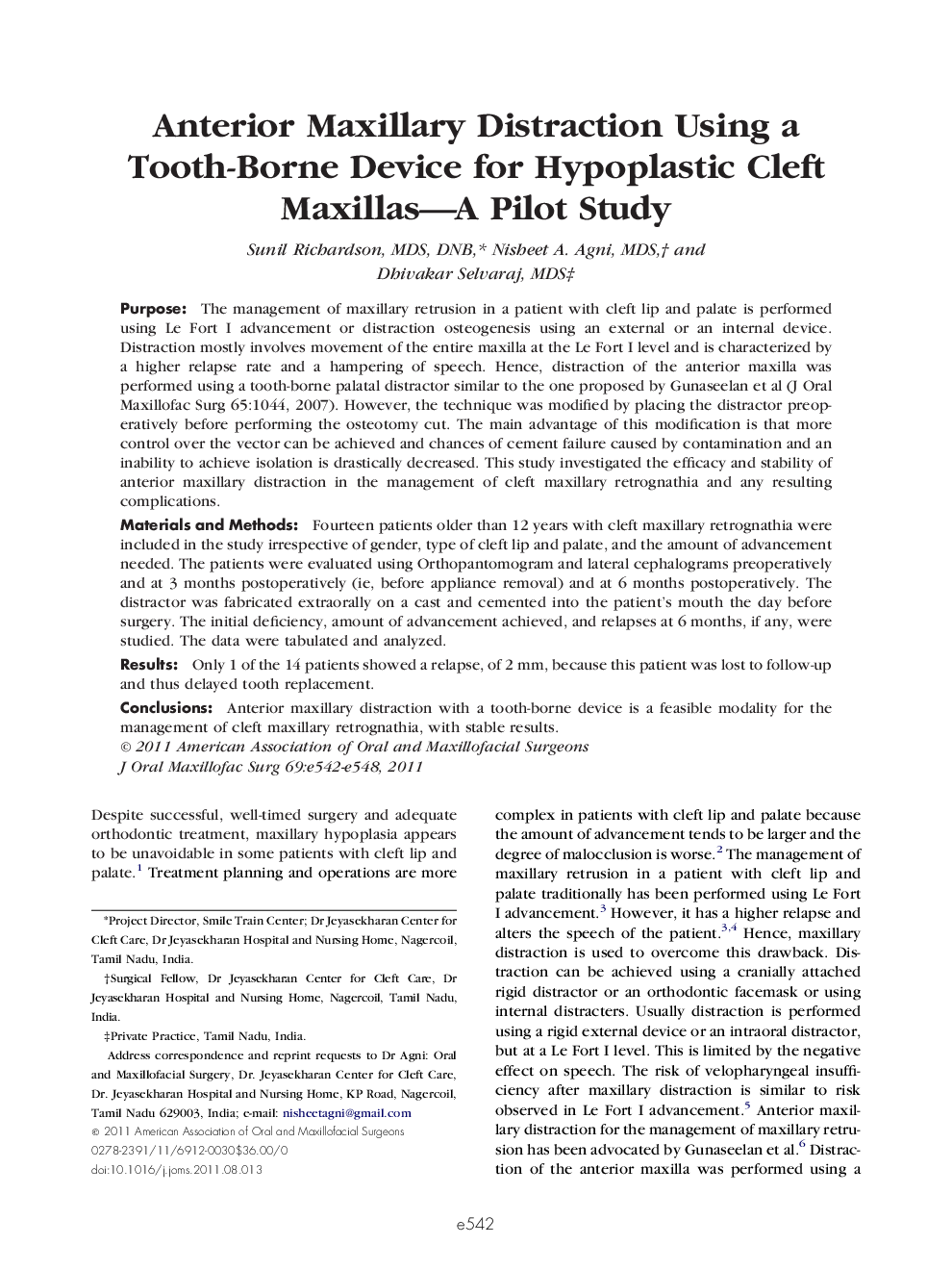| کد مقاله | کد نشریه | سال انتشار | مقاله انگلیسی | نسخه تمام متن |
|---|---|---|---|---|
| 3154448 | 1198048 | 2011 | 7 صفحه PDF | دانلود رایگان |

PurposeThe management of maxillary retrusion in a patient with cleft lip and palate is performed using Le Fort I advancement or distraction osteogenesis using an external or an internal device. Distraction mostly involves movement of the entire maxilla at the Le Fort I level and is characterized by a higher relapse rate and a hampering of speech. Hence, distraction of the anterior maxilla was performed using a tooth-borne palatal distractor similar to the one proposed by Gunaseelan et al (J Oral Maxillofac Surg 65:1044, 2007). However, the technique was modified by placing the distractor preoperatively before performing the osteotomy cut. The main advantage of this modification is that more control over the vector can be achieved and chances of cement failure caused by contamination and an inability to achieve isolation is drastically decreased. This study investigated the efficacy and stability of anterior maxillary distraction in the management of cleft maxillary retrognathia and any resulting complications.Materials and MethodsFourteen patients older than 12 years with cleft maxillary retrognathia were included in the study irrespective of gender, type of cleft lip and palate, and the amount of advancement needed. The patients were evaluated using Orthopantomogram and lateral cephalograms preoperatively and at 3 months postoperatively (ie, before appliance removal) and at 6 months postoperatively. The distractor was fabricated extraorally on a cast and cemented into the patient's mouth the day before surgery. The initial deficiency, amount of advancement achieved, and relapses at 6 months, if any, were studied. The data were tabulated and analyzed.ResultsOnly 1 of the 14 patients showed a relapse, of 2 mm, because this patient was lost to follow-up and thus delayed tooth replacement.ConclusionsAnterior maxillary distraction with a tooth-borne device is a feasible modality for the management of cleft maxillary retrognathia, with stable results.
Journal: Journal of Oral and Maxillofacial Surgery - Volume 69, Issue 12, December 2011, Pages e542–e548